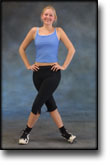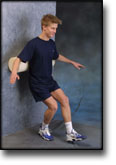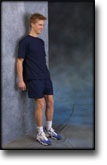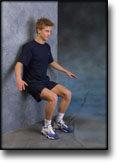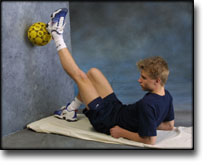|
Synovial plicae of the knee. Controversies and review.
Dupont JY. Clin Sports Med 1997 Jan;16(1):87-122.
Plicae are some of the normal synovial structures of the knee joint cavity. They are remnants of the mesenchymal tissue that occupies the space between the distal femoral and proximal tibial epiphyses in the 8-week-old embryo. The incomplete resorption leaves synovial pleats in most of the knee. The superior and the inferior plicae are the most common (50% to 65%) but have extremely little clinical relevance. Each may be of many various morphological types. The lateral plica is rare (1% to 3%). The medial plica is present at autopsies in one of every three or four knees. It also is of various types, wide and thick in one of every fifteen knees. Arthrography, ultrasonography, CT scan with arthrography, and MR imaging can demonstrate their presence and measure their size with good accuracy. Arthroscopy allows a very precise assessment of the plica, including dynamic examination. It looks for medial impingement against the patellofemoral articular surfaces and secondary (localized chondromalacia) as well as incidentally associated other knee pathologic conditions. Rarely, the medial plica becomes symptomatic, circumstances such as a history of blunt trauma, or more often, overuse of the knee can cause symptoms. Sometimes no special condition is necessary. The plica causes symptoms such as pain, crepitus, snapping or popping, or effusion related to patellofemoral joint motion. The clinical picture mimics a torn medial meniscus or a maltracking patella. Clinical examination is extremely helpful if the snapping plica is palpated at the medial edge of the patella, reproducing the patient’s symptoms. If chronic, these symptoms may be treated with nonsteroidal anti-inflammatory drugs, physiotherapy, electrophoresis, or local injection. Surgical treatment is indicated if conservative therapy fails. Arthroscopic complete resection of the plica cures the symptoms in a few days, therefore confirming the correct diagnosis and the effectiveness of the treatment. Histologic examination often confirms the chronic conflict between the plica and the femoral condyle. No morphologic character allows the assessment of the pathologic aspect of the plica. A medial plica is or is not symptomatic. The incidence of this syndrome is probably one out of ten medial plicae and 3% of arthroscopies at most. Associated lesions are very common. They often make the evaluation of the plica’s responsibility in symptoms difficult to analyze, leading to unsatisfactory results.
|







